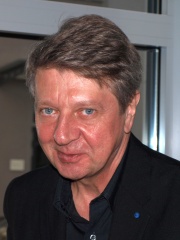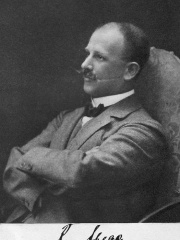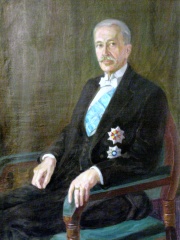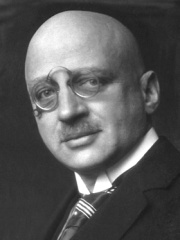
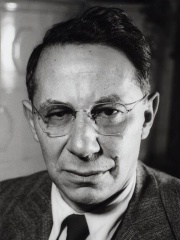
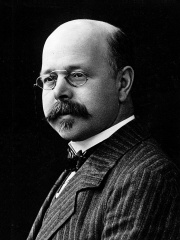
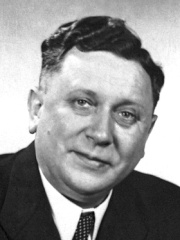


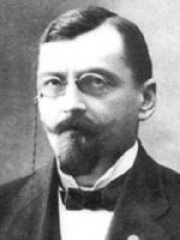
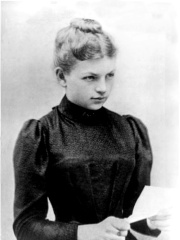
The Most Famous
CHEMISTS from Poland
This page contains a list of the greatest Polish Chemists. The pantheon dataset contains 602 Chemists, 26 of which were born in Poland. This makes Poland the birth place of the 5th most number of Chemists behind United Kingdom, and France.
Top 10
The following people are considered by Pantheon to be the top 10 most legendary Polish Chemists of all time. This list of famous Polish Chemists is sorted by HPI (Historical Popularity Index), a metric that aggregates information on a biography's online popularity. Visit the rankings page to view the entire list of Polish Chemists.

1. Fritz Haber (1868 - 1934)
With an HPI of 78.61, Fritz Haber is the most famous Polish Chemist. His biography has been translated into 85 different languages on wikipedia.
Fritz Jakob Haber (German: [ˈfʁɪt͡s ˈhaːbɐ] ; 9 December 1868 – 29 January 1934) was a German chemist who received the Nobel Prize in Chemistry in 1918 for his invention of the Haber process, a method used in industry to synthesize ammonia from nitrogen gas and hydrogen gas. This invention is important for the large-scale synthesis of fertilizers and explosives. It is estimated that a third of annual global food production uses ammonia from the Haber–Bosch process, and that this food supports nearly half the world's population. For this work, Haber has been called one of the most important scientists and industrial chemists in human history. Haber also, along with Max Born, proposed the Born–Haber cycle as a method for evaluating the lattice energy of an ionic solid. Haber, a known German nationalist, is also considered the "father of chemical warfare" for his years of pioneering work developing and weaponizing chlorine and other poisonous gases during World War I. He first proposed the use of the heavier-than-air chlorine gas as a weapon to break the trench deadlock during the Second Battle of Ypres. His work was later used, without his direct involvement, to develop the Zyklon B pesticide used for the killing of more than 1 million Jews in gas chambers in the greater context of the Holocaust. Following the Nazis' rise to power in 1933, Haber resigned from his position. Already in poor health, he spent time in various countries before Chaim Weizmann invited him to become the director of the Sieff Research Institute (now the Weizmann Institute) in Rehovot, Mandatory Palestine. He accepted the offer but died of heart failure mid-journey in a Basel, Switzerland hotel on 29 January 1934, aged 65.

2. Tadeusz Reichstein (1897 - 1996)
With an HPI of 77.04, Tadeusz Reichstein is the 2nd most famous Polish Chemist. His biography has been translated into 66 different languages.
Tadeusz Reichstein (20 July 1897 – 1 August 1996), also known as Tadeus Reichstein, was a Polish-Swiss chemist and a Nobel Prize in Physiology or Medicine laureate (1950), which was awarded for his work on the isolation of cortisone.

3. Walther Nernst (1864 - 1941)
With an HPI of 76.12, Walther Nernst is the 3rd most famous Polish Chemist. His biography has been translated into 74 different languages.
Walther Hermann Nernst (German pronunciation: [ˈvaltɐ ˈnɛʁnst] ; 25 June 1864 – 18 November 1941) was a German physical chemist known for his work in thermodynamics, physical chemistry, electrochemistry, and solid-state physics. His formulation of the Nernst heat theorem helped pave the way for the third law of thermodynamics, for which he won the 1920 Nobel Prize in Chemistry. He is also known for developing the Nernst equation in 1887. He studied physics and mathematics at the universities of Zürich, Berlin, Graz and Würzburg, where he received his doctorate 1887. In 1889, he finished his habilitation at University of Leipzig.

4. Kurt Alder (1902 - 1958)
With an HPI of 75.78, Kurt Alder is the 4th most famous Polish Chemist. His biography has been translated into 71 different languages.
Kurt Alder (German pronunciation: [ˈkʊʁt ˈaldɐ] ; 10 July 1902 – 20 June 1958) was a German chemist and Nobel laureate.
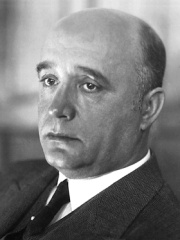
5. Friedrich Bergius (1884 - 1949)
With an HPI of 74.25, Friedrich Bergius is the 5th most famous Polish Chemist. His biography has been translated into 61 different languages.
Friedrich Karl Rudolf Bergius (German pronunciation: [ˈfʁiːdʁɪç ˈbɛʁɡi̯ʊs] , 11 October 1884 – 30 March 1949) was a German chemist known for the Bergius process for producing synthetic fuel from coal, Nobel Prize in Chemistry (1931, together with Carl Bosch) in recognition of contributions to the invention and development of chemical high-pressure methods. Having worked with IG Farben during World War II, his citizenship came into question following the war, causing him to ultimately flee to Argentina, where he acted as adviser to the Ministry of Industry.

6. Konrad Emil Bloch (1912 - 2000)
With an HPI of 73.65, Konrad Emil Bloch is the 6th most famous Polish Chemist. His biography has been translated into 57 different languages.
Konrad Emil Bloch (German pronunciation: [ˈkɔnʁaːt ˈblɔx] ; 21 January 1912 – 15 October 2000) was a German-American biochemist. Bloch received the Nobel Prize in Physiology or Medicine in 1964 (joint with Feodor Lynen) for discoveries concerning the mechanism and regulation of the cholesterol and fatty acid metabolism.

7. Casimir Funk (1884 - 1967)
With an HPI of 71.73, Casimir Funk is the 7th most famous Polish Chemist. His biography has been translated into 60 different languages.
Casimir Funk (Polish: Kazimierz Funk [kaˈʑimjɛʂ ˈfuŋk]; February 23, 1884 – November 19, 1967) was a Polish biochemist generally credited with being among the first to formulate the concept of vitamins (the first being the English chemist Frederick Gowland Hopkins) after publishing a landmark medical writing in 1912. He highlighted these "vital amines" (or "vitamines") as critical in fighting significant diseases such as pellagra and rickets, and his analysis influenced a major shift in scientific thinking. His scientific work involved research in Poland, France and the United Kingdom. In 1920, he became a citizen of the United States where he continued his work.

8. Antoni Grabowski (1857 - 1921)
With an HPI of 71.32, Antoni Grabowski is the 8th most famous Polish Chemist. His biography has been translated into 42 different languages.
Antoni Grabowski (11 June 1857 – 4 July 1921) was a Polish chemical engineer, and an activist of the early Esperanto movement. His translations had an influential impact on the development of Esperanto into a language of literature.

9. Clara Immerwahr (1870 - 1915)
With an HPI of 69.87, Clara Immerwahr is the 9th most famous Polish Chemist. Her biography has been translated into 43 different languages.
Clara Helene Immerwahr (German pronunciation: [ˈklaːʁa heˈleːnə ˈʔɪmɐvaːɐ̯]; 21 June 1870 – 2 May 1915) was a German chemist. She was the first German woman to be awarded a doctorate in chemistry from the University of Breslau, and is credited with being a pacifist as well as a "heroine of the women's rights movement". From 1901 until her death from suicide in 1915, she was married to the eventual Nobel Prize-winning chemist Fritz Haber.
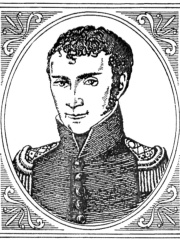
10. Johann Wilhelm Ritter (1776 - 1810)
With an HPI of 69.10, Johann Wilhelm Ritter is the 10th most famous Polish Chemist. His biography has been translated into 32 different languages.
Johann Wilhelm Ritter (16 December 1776 – 23 January 1810) was a German chemist, physicist and philosopher. He is associated with the German Romanticism. He is also known for discovering the ultraviolet part of the electromagnetic spectrum. He is also credited for the first achieved sustained electrolysis of water and the discovery of electroplating.
People
Pantheon has 26 people classified as Polish chemists born between 1566 and 1950. Of these 26, 1 (3.85%) of them are still alive today. The most famous living Polish chemists include Krzysztof Matyjaszewski. The most famous deceased Polish chemists include Fritz Haber, Tadeusz Reichstein, and Walther Nernst.
Living Polish Chemists
Go to all RankingsDeceased Polish Chemists
Go to all RankingsFritz Haber
1868 - 1934
HPI: 78.61
Tadeusz Reichstein
1897 - 1996
HPI: 77.04
Walther Nernst
1864 - 1941
HPI: 76.12
Kurt Alder
1902 - 1958
HPI: 75.78
Friedrich Bergius
1884 - 1949
HPI: 74.25
Konrad Emil Bloch
1912 - 2000
HPI: 73.65
Casimir Funk
1884 - 1967
HPI: 71.73
Antoni Grabowski
1857 - 1921
HPI: 71.32
Clara Immerwahr
1870 - 1915
HPI: 69.87
Johann Wilhelm Ritter
1776 - 1810
HPI: 69.10
Richard Abegg
1869 - 1910
HPI: 68.55
Ignacy Mościcki
1867 - 1946
HPI: 68.48
Overlapping Lives
Which Chemists were alive at the same time? This visualization shows the lifespans of the 24 most globally memorable Chemists since 1700.

